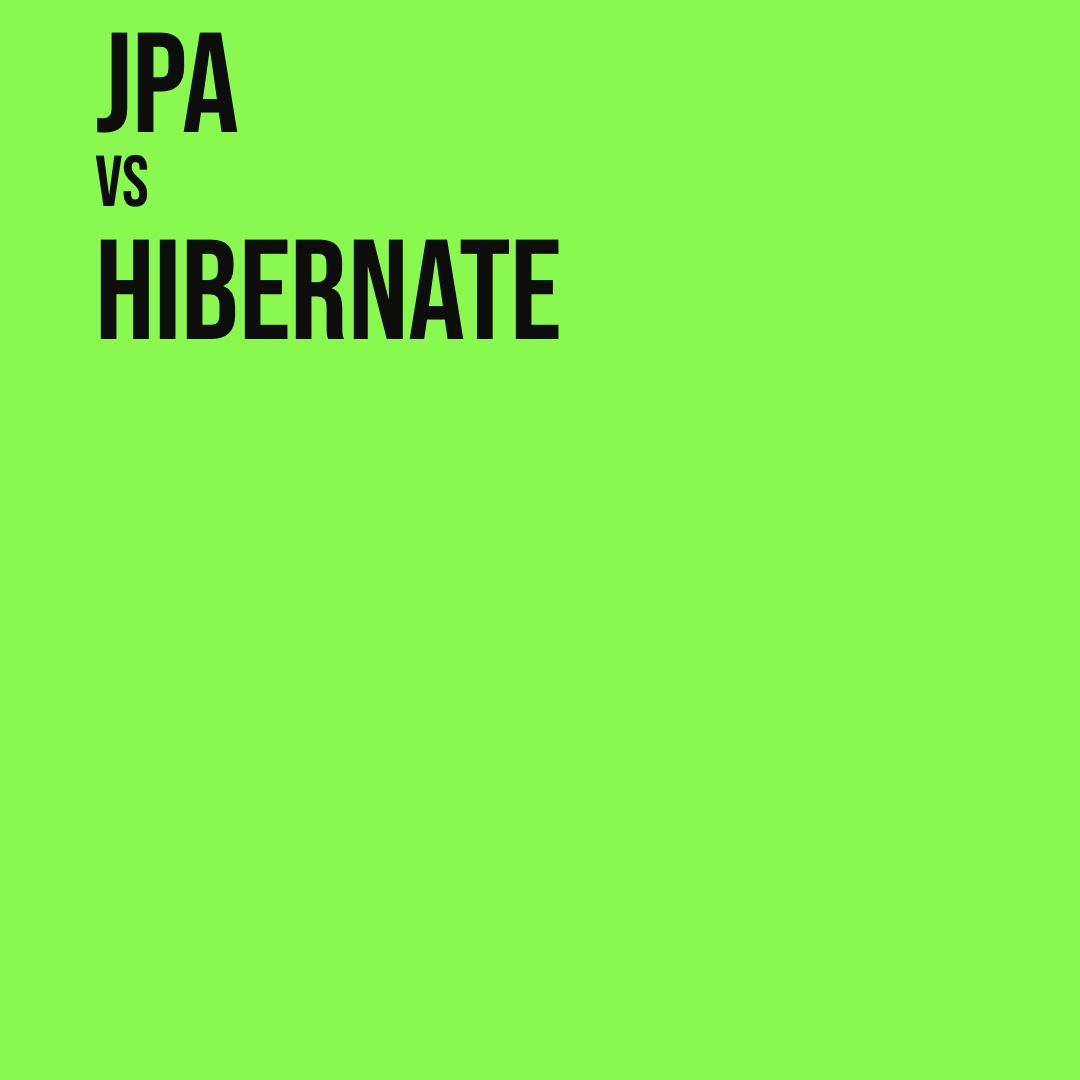In Java enterprise development and in almost all kind of applications we need to persist and process some kind of data. Managing database interactions efficiently and effectively is crucial for building robust and scalable applications. Two commonly used technologies for achieving this in Java applications are JPA (Java Persistence API) and Hibernate. While both are related and work in tandem, they have distinct characteristics and serve different purposes. In this blog post, we will explore the differences between JPA and Hibernate, shedding light on their unique features and when to choose which one.
What is JPA?
Java Persistence API (JPA) is a specification provided by Java for persisting data in a relational database using Object-Relational Mapping (ORM). Before the introduction of JPA, developers had to use JDBC API to manage connections and talk to the database. Code written using plain JDBC used to have lots boilerplate code for executing a simple query including wrapping each database call in try catch block for exception handling. Life became a bit easier if Spring framework was used in the project.
The main objective of JPA is to abstract the database interactions, allowing developers to focus on their business logic without worrying about the underlying SQL queries. JPA acts as an interface between the Java application and the database, providing a standardized way of managing data persistence. There is open source implementation of JPA for all popular SQL and noSQL databases. Hibernate is one such popular implementations among others. You can easily swap underlying database you are connecting to without changing any code of your application.
Key Features of JPA:
- Entity Annotations: JPA uses annotations to mark Java classes as entities, representing database tables. These annotations define the mapping between the Java class attributes and the corresponding table columns. JPA will automatically infer the column name if you follow expected naming convention. Otherwise, you can supply column name using annotation.
- EntityManager: JPA provides EntityManager, which is responsible for managing the lifecycle of entities, performing CRUD (Create, Read, Update, Delete) operations, and handling transactions. JPA provides standard methods to fetch, update or delete a database entry without you needing to write any query. Though you can write your own queries for complex queries including joins or any other advanced query features.
- JPQL (Java Persistence Query Language): JPQL is an object-oriented query language used in JPA to perform database operations. It allows developers to write database queries using Java entity classes and their relationships.
- Persistence Unit: A persistence unit is a configuration that defines the connection settings and mapping information for JPA entities. It is usually specified in the persistence.xml file.
What is Hibernate?
Hibernate is an open-source object-relational mapping (ORM) framework that implements the JPA specification. It serves as an implementation of JPA and offers additional features beyond the JPA standard. Hibernate allows developers to work with plain Java objects without the need of writing boilerplate SQL code for most of the common CRUD operations. Though it is flexible enough to allow you write your own SQL where needed. It acts as an intermediary between the application and the database, handling the translation of Java objects to database tables and vice versa.
Key Features of Hibernate:
- SessionFactory: Similar to JPA’s EntityManager, Hibernate provides the SessionFactory, which is responsible for creating Session instances. Sessions are used to perform database operations and manage transactions. As Hibernate implements JPA, you can also use JPA entity manager for the same purpose.
- HQL (Hibernate Query Language): HQL is a powerful query language that closely resembles SQL but operates on Hibernate entities and their associations. It enables developers to write database queries using high-level object-oriented concepts. This is equivalent to JPQL in JPA.
- Caching: Hibernate caching refers to the mechanism used by the Hibernate ORM framework to improve the performance and responsiveness of applications by reducing the number of trips made to the database. It involves storing frequently accessed data in memory so that subsequent requests for the same data can be served from the cache, eliminating the need to retrieve the data from the database every time. Hibernate provides different levels of caching to optimize various aspects of data retrieval and manipulation. It includes first-level cache (session-level cache), second-level cache (shared across sessions) and query cache.
- Dirty Checking: Hibernate automatically detects changes made to entities and synchronizes them with the database during a transaction, a process known as dirty checking.
- Native SQL Queries: Hibernate allows the use of native SQL queries when necessary, offering more control over the database interactions.
JPA vs Hibernate – Understanding the Difference
Now that we have a basic understanding of both JPA and Hibernate let’s find out the key differences between the two:
1. Specification vs. Implementation
The primary difference between JPA and Hibernate lies in their roles. JPA is a specification, while Hibernate is an implementation of that specification. JPA provides a set of interfaces, annotations, and rules that ORM frameworks should adhere to, allowing developers to write code that is compatible with any JPA-compliant ORM, including Hibernate. Hibernate, on the other hand, is a concrete ORM framework that fully implements the JPA specification. In essence, Hibernate is one of the many options available for implementing JPA. In addition to providing JPA compliant features, Hibernate implements many additional functionalities.
2. Portability
JPA is designed to promote application portability by providing a standardized API that is independent of any specific ORM implementation. By adhering to the JPA standard, developers can switch between different JPA-compliant ORM frameworks, including Hibernate, without modifying their application code significantly. This portability is especially beneficial when the project requirements change or when a specific ORM proves inadequate for the task.
On the other hand, Hibernate, being a concrete ORM implementation, offers some additional features beyond the JPA standard. While these features can be advantageous in certain scenarios, they might tie the application to Hibernate-specific functionalities, reducing portability. It is always advisable to use JPA methods instead of Hibernate specific methods for if a functionality is supported by JPA.
3. Learning Curve and Flexibility
JPA, being a specification, has a more limited feature set compared to Hibernate. While JPA provides the essential functionalities for most applications, Hibernate offers more advanced features and greater flexibility. This means that Hibernate might have a steeper learning curve for beginners, as they need to familiarize themselves with both JPA and Hibernate’s extended capabilities.
Developers who prioritize simplicity and adhere strictly to the JPA standard may prefer JPA, whereas those who seek greater control and customization options might lean towards Hibernate.
Conclusion
In summary, both JPA and Hibernate are essential tools for handling data persistence in Java applications. JPA, as a specification, promotes portability by allowing developers to switch between different JPA-compliant ORM frameworks, including Hibernate. Hibernate, as an implementation of JPA, offers additional features and customization options, but might tie the application to Hibernate-specific functionalities.
The choice between JPA and Hibernate depends on the project’s requirements, the desired level of flexibility, and the team’s familiarity with the technologies. For simple applications where portability is a priority, JPA might be the preferred option. However, for projects that demand greater control and advanced features, Hibernate could be the better fit.
In conclusion, understanding the differences between JPA and Hibernate empowers developers to make informed decisions, resulting in efficient and scalable data persistence solutions tailored to their specific needs.




